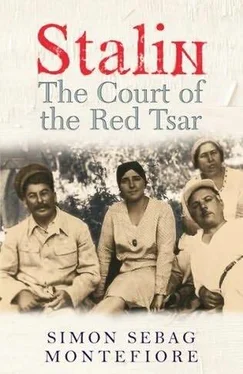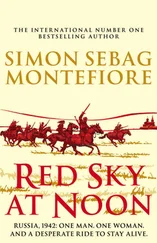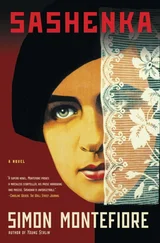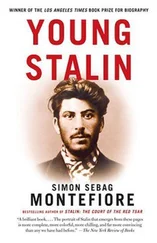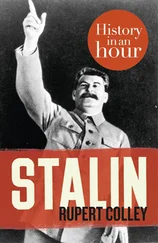Kirov did not regard Stalin as a saint: during the 1929 birthday celebrations that raised Stalin to Vozhd , the Leningraders dared to mention Lenin’s views on Stalin’s rudeness. 12Kirov knew Stalin’s unusual mentality well: when a student sent him some questions on ideology, he forwarded them to Kirov with this note: “Kirov! You must read the letter of student Fedotov… an absolutely politically illiterate young man. Maybe you will telephone him and talk to him, probably he is a corrupted drunken “Party member.” We must not introduce the GPU I think. By the way, the student is a very good trickster with an anti-Soviet face which he conceals artistically beneath a simple face that says ‘Help me understand. Maybe you understand all—I don’t.’ Greetings! Stalin.” 13No doubt Kirov’s intimacy with Sergo, Kuibyshev and Mikoyan worried Stalin. The challenges of 1932—the Riutin Platform, Kirov’s possible resistance to Riutin’s execution, the famine, the suicide of Nadezhda—had shown Stalin needed firmer loyalty.
After Nadya’s death, Kirov was almost part of the family: Stalin insisted he stay with him, not Sergo. Kirov stayed at Stalin’s apartment so often he knew where the sheets and pillows were and he would bed down on the sofa. The children loved Kirov and sometimes when he was there, Svetlana would put on a doll show for him. Her favourite game was her own mock government. Her father was “First Secretary.” This Stalinette wrote orders like: “To my First Secretary, I order you to allow me to go with you to the theatre.” She signed it “The Mistress [or Boss— khozyaika ] Setanka.” She hung the notes in the dining room above the telephone table. Stalin replied: “I obey.” Kaganovich, Molotov and Sergo were Setanka’s Second Secretaries, but “she has a special friendship with Kirov,” noticed Maria Svanidze, “because Joseph is so good and close with him.” 14
Stalin returned to the ascetic Bedouin life of the underground Bolshevik, with the tension and variety of the revolutionary on the run, except that now his restless progress more resembled the train of a Mongol Khan. Though a creature of routine, he needed perpetual movement: there were beds in his houses but there were also big, hard divans in every room. “I never sleep on a bed,” he told a visitor. “Always a divan,” and on whichever one he happened to be reading. “Which historical person had the same Spartan habit?” he asked, answering with that autodidactic omniscience: “Nicholas I.” Nadya’s death naturally changed the way Stalin and his children lived. 15
9. THE OMNIPOTENT WIDOWER AND HIS LOVING FAMILY
Sergo the Bolshevik Prince
Stalin could not bear to go on living in the Poteshny Palace apartment and the Zubalovo mansion because Nadya’s homes were too painful for him. Bukharin offered to swap apartments. Stalin accepted this comradely offer and moved into Bukharin’s apartment on the first floor of the triangular Yellow Palace, the old Senate, [56] President Putin still rules from this building, the seat of power in Russia since Lenin. Putin’s Chief of Staff works in Stalin’s old office. Until 1930, Stalin kept his main office on the fifth floor of the grey granite edifice of the Central Committee building on Old Square, up the hill from the Kremlin, where he had been well served by his successive secretaries, Lev Mekhlis, who went on to greater things, and Tovstukha, who died prematurely. It was here that Stalin planned his campaigns against Trotsky, Zinoviev and Bukharin. In 1930, Poskrebyshev and the Special Sector, the fulcrum of Stalin’s dictatorship, moved into the Yellow Palace (also known as the Sovnarkom or Council of Ministers building) where the Politburo met, Stalin worked—and now lived.
roughly beneath his office. Since his office stood where the two wings of the Senate met at an angle, it was known to the cognoscenti as the “Little Corner.” Its polished floors, with their red and green carpets running down the centre, its wooden panelling up to shoulder height, its dreary drapes, were kept as clean and silent as a hospital. His secretary, Poskrebyshev, sat at the front of the anteroom, his desk immaculate, controlling access. Stalin’s office itself was long, airy and rectangular, heavy with drapes, and lined with ornate Russian stoves against which he would lean to ease the aching in his limbs. A huge desk stood at the far right corner while a long green baize table, with straightbacked chairs in white covers, stood to the left beneath portraits of Marx and Lenin. 1
Downstairs, his “formal,” gloomy apartment with the “vaulted ceilings” was to be his Moscow residence until his death. “It was not like a home,” wrote Svetlana. It had once been a corridor. He expected the children to be there every evening when he returned for supper to review and sign their homework, like every parent. Until the war, he maintained this dutiful routine—some of his parental reports to the children’s teachers survive in the archive.
The children adored Zubalovo—it was their real home so Stalin decided not to uproot them but to build his own “wonderful, airy modern one-storey” dacha at Kuntsevo, nine kilometres from the Kremlin. This now became his main residence, until he died there twenty years later, developing over the years into a large but austere two-storey mansion, painted a grim camouflage green, with a complex of guardhouses, guest villas, greenhouses, a Russian bath and a special cottage for his library, all surrounded by pinewoods, two concentric fences, innumerable checkpoints and at least a hundred guards. [57] Kuntsevo was, like most of his other residences, built by Merzhanov: Stalin constantly ordered renovations and, after the war, the second floor. After his death, the contents were packed up but under Brezhnev, these were reassembled by Stalin’s reunited staff. It remains today closed up under the aegis of the FSB security organ, but exactly as it was when Stalin lived, even down to his shaving brushes and gramophone.
Here he indulged his natural craving for privacy, the external expression of his emotional detachment: no guards or servants stayed in the house; unless friends came for the night, he henceforth closed himself in, quite alone. Stalin drove out to Kuntsevo after dinner—it was so close it was often called “Nearby” by his circle because he also sometimes stayed at his other home, “Faraway,” at Semyonovskoe. The idyllic life went on at Zubalovo, Svetlana’s “paradise like an enchanted island.”
Stalin did not become a haunted hermit after Nadya’s death. It was true he spent ever more time with his male magnates, almost like the segregated court of a seventeenth-century Tsar. But the all-powerful widower also found himself in the loving but overwhelming embrace of a newly reconstructed family. Pavel and Zhenya Alliluyev, recently returned from Berlin, became his constant companions. Nadya’s sister Anna and her husband Stanislas Redens had returned from Kharkov for his new appointment as Moscow GPU boss. Redens, a handsome burly Pole with a quiff, always sporting his Chekist uniform, had been the secretary of the founder of the secret police, Dzerzhinsky. He and Anna fell in love during Stalin and Dzerzhinsky’s expedition to investigate the fall of Perm in 1919. Redens had a reputation among austere Old Bolsheviks of “putting on airs” and being a drinker because of an unfortunate incident. Until 1931, he had been Georgian GPU boss. However, his deputy, Beria, had, according to the family, outwitted Redens in a prank more worthy of a hearty stag night than a secret police intrigue—but it worked nonetheless. Beria got Redens drunk and sent him home naked. Family legends rarely tell the whole story: Stalin’s letters reveal that Redens and local bosses tried to have Beria removed to the Lower Volga but someone, probably Stalin, intervened. Beria never forgave him. But it was Redens, not Beria, who left Tiflis.
Читать дальше
